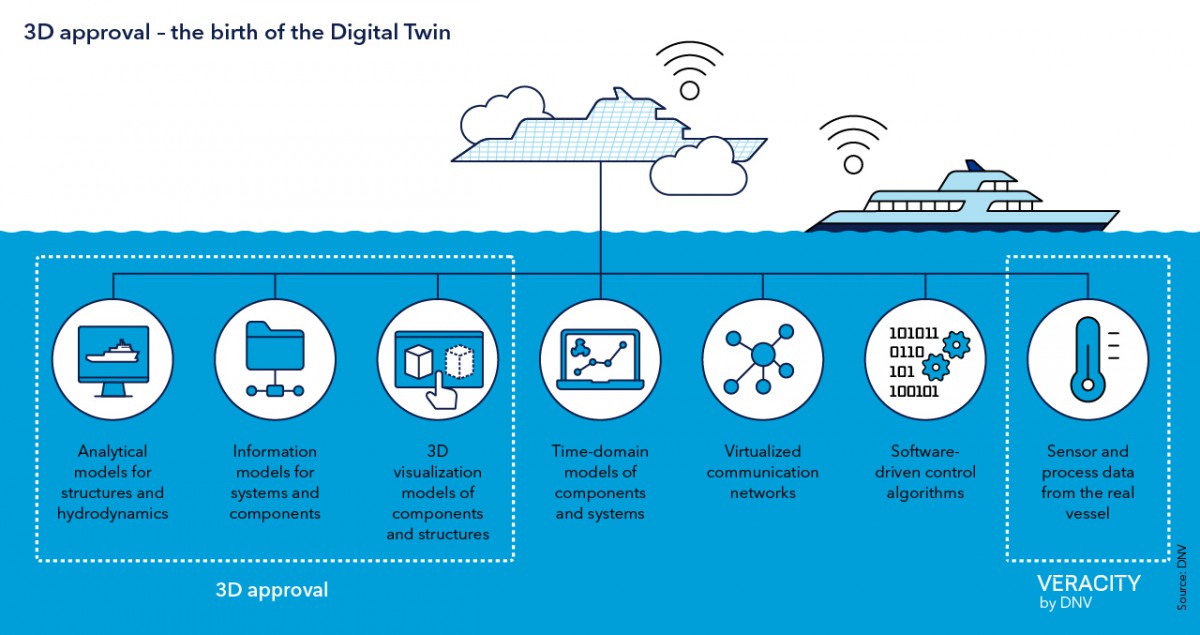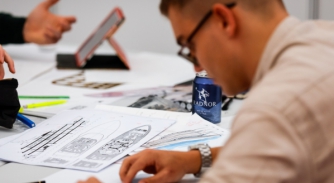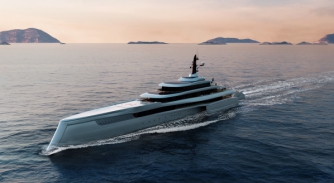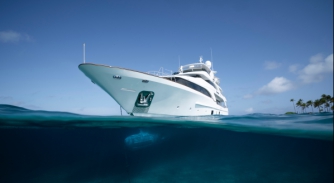Using 3D models to streamline the approval process
DNV’s Martin Richter and Ole Christian Astrup dissect how the process of approving vessel design can be made smoother by the use of 3D models…

As shipping makes advances in digitalisation, the approval process is being made smoother and more streamlined by the use of 3D models. In this article, Martin Richter, Ship Type Expert Yachts, Principal Engineer, and Ole Christian Astrup, Senior Principal Researcher, from the classification society and expert maritime advisory service DNV explain how advancements in this sector have raised the interest of stakeholders in the yacht industry.
For the past few decades, approval of vessels, including yachts, has predominantly taken place on 2D drawings. While technological advancements in recent years have resulted in most vessel designs being 3D-based, traditional approval methods have continued to prevail. A common practice still is for 2D drawings to be extracted from 3D models for approval.
“The obvious next step is to extract the information needed for design approvals directly from these 3D models and perform the entire review process digitally instead of the traditional drawing-based reviews,” says Astrup.
OCX standardisation facilitates digital workflow
Following the establishment of a DNV-led Joint Industry Project (JIP) approved in 2016, ship designers, yards and classification societies can now engage in 3D approval through the Open Class 3D Exchange Standard, also known as OCX. Crucially, this enables interoperability across all the different computer-aided design (CAD) applications, overcoming fundamental problems of heterogeneity.
“A wide range of CAD software applications and digital engineering tools are used in design and manufacturing processes, which has created technical challenges, such as data integrity and difficulties with point-to-point integration,” explains Astrup. “OCX solves this issue by effectively acting as a conduit between these platforms, thus standardising formats and enabling shipbuilders and class societies to review models and engage in a seamless digital workflow.”
3D approval appealing to the yacht industry
Deltamarin was one of the first companies to benefit from 3D approval after DNV approved a 3D model as part of the classification material for Höegh Autoliners’ Aurora Class PCTCs in November 2022. Since then, several DNV partners have shown increased interest in 3D approval, including many from the yacht segment.
“Stakeholders in the yacht segment are usually keen to be at the forefront of technological trends, and several of our clients have expressed an interest in 3D approval recently,” says Richter. “This has mainly come from designers and shipyards, who are keen to take advantage of the range of benefits that 3D approval can deliver.”
3D approval saves time and money
Using 3D approval instead of traditional 2D drawings brings many benefits, including savings in time and money for shipyards and designers.
“Most designers and shipyards in the yacht industry use 3D programs in their design process, so they stand to benefit a lot from 3D approval as this will eliminate the need to create some 2D drawings. This will reduce their workloads, thus reducing time to market and – critically – reducing costs,” says Richter.
Added quality with 3D approval
“There is also an added quality element with 3D approval,” Richter explains. “You may see details on the 3D platform that aren’t as clear on 2D drawings, such as connecting points, which adds value to the approval process on all sides.”
Interacting through the OCX platform also makes the approval process more dynamic. “With all parties involved having instant and constant access to the platform, the approval process can be much more interactive,” Richter adds. “This helps to drive a common understanding between designers, shipyards and DNV, which improves quality.”
How does the 3D approval process work?
“Engaging in the 3D approval process through the OCX standard enables a fully digital, design-centric and iterative work process between the designer or yard and DNV,” explains Astrup. Typically, this will begin with a yard or designer uploading a 3D OCX model to DNV. DNV will then review the 3D model, perform rule calculations and provide comments and red markings, if needed, directly on the design model.
The yard or designer can then make the desired design changes while engaging in a model-centric dialogue with DNV. This would usually result in a new design revision being uploaded, documenting the required changes, before a new vessel is eventually launched onto the market.
The future for approval of yachts
While engaging with DNV through the OCX platform is currently limited to the design and approval of the hull, it is expected that this will be extended to cover other functional zones related to yacht design and regulatory requirements.
“We see much wider uses, beyond the hull in the future,” says Richter. “This can include components like rudders and large shell doors, but also load line and stability, to name just a few.”
Digitalisation gathering speed
With the digitalisation of shipping gathering speed, it is up to all stakeholders – including shipowners, yards, designers and classification societies – to ensure this happens in a smooth way that optimises resources and makes processes more seamless and efficient. Switching to 3D approval can be a key step on this journey.
“The OCX standard represents a significant step forward in the approval process and the benefits are clear,” concludes Astrup. “We expect this to become a central part of the approval process for stakeholders in the yacht segment as the digitalisation of shipping continues to ramp up.”
NEW: Sign up for SuperyachtNewsweek!
Get the latest weekly news, in-depth reports, intelligence, and strategic insights, delivered directly from The Superyacht Group's editors and market analysts.
Stay at the forefront of the superyacht industry with SuperyachtNewsweek
Click here to become part of The Superyacht Group community, and join us in our mission to make this industry accessible to all, and prosperous for the long-term. We are offering access to the superyacht industry’s most comprehensive and longstanding archive of business-critical information, as well as a comprehensive, real-time superyacht fleet database, for just £10 per month, because we are One Industry with One Mission. Sign up here.
Related news

Superyacht UK Young Designer Competition commences
The event launched the 2024 Superyacht UK Young Designer competition, offering a platform for talent exploration and industry engagement
Fleet

Lateral presents new 140-metre multihull project
The progressive naval architecture firm has introduced a new highly efficient and hydrodynamic 140m trimaran yacht concept with T. Fotiadis Design
Fleet
.jpg)
A new era of crossover design
Interview with Michele Dragoni of Dragoni Design Lab about future trends in the market
Fleet

Valentina Zannier founds new design studio
SuperyachtNews sits down with the internationally acclaimed designer following the unveiling of her new studio
Fleet

Startups to watch in 2024
With hundreds of millions invested in yachting startups over the course of 2023, Gabbi Richardson highlights the ones to watch in the new year
Business

Putting function over form
Dario Schiavo asks, can captains do more to assist shipyards, designers and owners to optimise yacht usability?
Crew
Related news
Lateral presents new 140-metre multihull project
2 years ago
A new era of crossover design
2 years ago
Valentina Zannier founds new design studio
2 years ago
Startups to watch in 2024
2 years ago
Putting function over form
2 years ago
More sustainability jargon busting
2 years ago
NEW: Sign up for
SuperyachtNewsweek!
Get the latest weekly news, in-depth reports, intelligence, and strategic insights, delivered directly from The Superyacht Group's editors and market analysts.
Stay at the forefront of the superyacht industry with SuperyachtNewsweek



